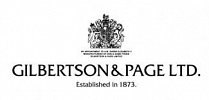Case Studies » Gilbertson & Page

The challenge
Gilbertson and Page are manufacturers of dry dog and cat food biscuits for the commercial and retail pet care sectors. The site production was approximately 40,000 tonnes in 2016. The company contacted Mesh to carry out a DSEAR RA after previous unsatisfactory reports were delivered from other providers. Hazards are principally from dusts arising from storage, handling and processing of the feed grains and powders.
Grain and seed dust is combustible and may add to fire and explosion hazards within confined plant particularly. Fine dust may ignite – and give rise to potential fire and explosion hazards if present at sufficient concentration in air. Combustible dust properties require strict procedures and maintenance of key equipment to minimise the likelihood of ignition and consequential loss to people and assets. Secondary risks around fired equipment, flammable gases, workshop solvents and transportation lubricants were also to be considered.
The solution provided
An assessment of the site was carried out in compliance with the DSEAR regulations 2002 as amended in June 2015 for compressed gases and corrosive substances, and a number of points of significance were noted.
Documentary evidence was provided pertaining to existing material inventory, local site procedures and maintenance - plus an overview of the site safety systems at the time of survey. Additional background information was provided by each site’s management team.
Adequate statutory checks are a critical requirement for relevant extraction, pressure systems and / or relief vents installed on-site. The safety of the operations relies heavily upon the operation of the dust removal and ventilation systems and the importance of planned maintenance and inspection is of utmost importance. Hazardous Area Classification was applied to those areas where a flammable atmosphere persists either briefly or for longer periods of time as outlined in the regulations – specifically within confines of equipment or around material handling or storage locations.
The significance of earthing and continuity checks was also emphasised at the time of survey. A full review of plant operations, equipment and working procedures was undertaken to identify where potential hazardous zoning was needed and how and where sources of ignition could be removed. As well as technical measures, organizational control measures were also assessed during the visit.
All of these issues were considered and the detailed DSEAR report, scenario risk assessments, hazardous zoning plans and series of recommendations was issued to management to ensure sufficient control of DSEAR risks is maintained as low as reasonably practicable (ALARP).

